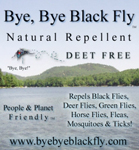Amphibians & Reptiles of Maine…..
Maine’s climate limits the number of Herps that are able to survive during the relative short summer and cold winter months. Since the list is small, discovering and observing most of these species is fun and attainable with a bit of dedicated persistence. Turtles are a bit challenging and should be pursued with caution given their shy nature and that 3 species are listed as State Endangered or Threatened. Click here for the IF&W list of Endangered Species…..
There are no poisonous snakes that inhabit Maine however; snakes have teeth and can give a nasty bite when defending themselves. Snapping Turtles also have a reputation for biting but like all turtles do not have any teeth, they use their powerful jaws to hold on to prey much larger than themselves. Do be respectful of their defenses should they become threatened when you are observing these wild animals.
Little explanation is needed to identify a frog from a salamander, turtle or snake, but identifying each individual species is more challenging. An excellent field guide specific to Maine can be ordered here….. from IF&W.
Many of the animals need to be carefully handled and not enough encouragement can be given to have clean hands or gloves, do not remove them from where they are found or place them in hot sun where their skin can quickly dry out and of course do not to drop these delicate creatures.
As with all animals, when observing make note of the habitat the Herp was found in and the time of year. This can make a difference when large Green Frogs are heading from ponds to smaller swamps in late summer to find mud for winter hibernation. The same is true in Spring when Salamanders and Frogs are moving toward mating areas. This is when Turtles are often seen on roadsides where they lay their eggs in the soft gravel found on the shoulders of the roadway.
The Frogs have unique markings or coloration around their mouths, throats and legs or have protruding ridges or bumps characteristics on their heads and backs. Here is a link to hear Vocal Identification of the Frogs & Toads found in Maine…..
The Salamanders have unique coloration and detailed grooves along the sides of the body. Additionally look at the toes on the hind feet.
Snakes can be identified by their size and color patterns along with habitat. If you are able to handle them, support the entire body and make note of what the scales look like, are there spots, lines or stripes on portions of the body. Are they thin or have tails slimmer than the rest of the body? Are the Scales Smooth, 4 species in Maine or Keeled, they feel rough when handled, 6 species in Maine.
Turtles are identified by their shells. Make note of the upper part, called the Carapace, its overall shape and coloration. The lower part, called the Plastron usually has more characteristic coloration unique to each individual species.



